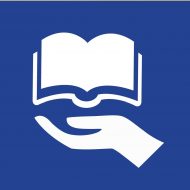By Wilbert Garingo Enostacion
On July 16, 1990, Monday afternoon, at exactly 4:26 (DST), Luzon was shaking! The tremor was felt at intensity 7.7 according to Philippine Institute of Volcanology and Seismology (PHILVOLCS). Huge buildings collapsed like an accordion. Non-retrival of bodies trapped inside collapsed buildings in Baguio City, Cabanatuan City in Nueva Ecij a, Dagupan City in Pangasinan and in the towns of Agoo, Aringay and Caba in LaUnion; had brought the once fresh and consoling air into an odorous air of funeral parlors! In the once tourist spot and “summer capital” of the Philippines, Baguio City, people were seen fleeing like rats, as the aftershock were felt stronger. Roads were buried under tons of mud and rocks in outlying areas where multiple landslides occurred.
The death toll of the killer quake reached to 1,999 as of August 10; the number is increasing as an account of deaths were unknown in many areas.
Though deaths were numberless in this calamity, brethren were spared in all places. No direct victims suffered casuality. However, the after-effect of it does. A sister in Caba lost a child during evacuation when the baby got sick of pneumonia. Based on reports given by brethren, these are the informations needed to be disseminated to all.
Baguio City and Cabanatuan City suffered the most tragic disaster, but no lives of brethren were reported lost. Froilan Nishiss house suffered the worst damage. Andrew Gawe’s four-door owned apartment suffered crackings and broken glasses. In Cabanatuan City and other parts of Neuva Ecija, many lost livelihood caused by the quake.
Faustino dela Cruz of Urdaneta reported that in Pangasinan area, three brethren lost homes when their houses were buried in the mud and flood waters. The same in Tarlac, Dominador Arcega of San Manuel reported that a dam was forcibly opened by the quake and flood waters flowed to houses killing some of the brethren’s working animals.
When the news of the quake reached U.S. brethren, worries on their minds were evident. First to call to seek information regarding the plight of the Filipino brethren was John Humphries of Louisville, Kentucky. He called Noli H. Villamor. Noli in return called this writer to assess the damage caused by the quake to the brethren. Within twenty-four hours, a full report was given to Noli to be relayed to John.
Brother Humphries disseminated the tragic event to some U.S. churches. Somehow, some concerned U.S. brethren immediately responded; however a multitude of them were reluctant. Maybe this was so because, in the past calamities that struck the islands, solicitations by U.S. brethren went into the pockets of some unscrupulous preachers, victimizing the victims!
However, as the day changed to night, and night into day, time has changed from bad to good. At present time, benevolent funds should and will be thoroughly documented to avoid any suspicions from brethren. Every check coming, will be distributed to the needy brethren; bearing the names of brethren, and signed by any preachers; then it will be reported to the sender. To anyone who wanted to know on this style, feel free to contact these men mentioned below this column.
U.S. brethren who have sent immediate assistance were (as of this writing): Connie W. Adams ($200 dollars): it was distributed to the brethren in Santiago sur, Caba, LaUnion. Complete report was submitted to him.
Taylorsville church, Louisville, Kentucky ($200 dollars) was given to a sister whose child died during the evacuation, a member of the Caba church.
Cecil Willis ($100 dollars): it was distributed to the brethren in Aringay.
Though not adequate, it helps in a small way. These were the funds that was received for the brethren in LaUnion. Other places, such as Pangasinana and Tarlac, need financial assistance also to reconstruct their houses and livelihood.
This article was written in behalf of the Filipino brethren who need immediate assistance from U.S. brethren. In this time of need, please open your hearts to the plea of assistance. The aftershocks continue to bring havoc to many saints, especially the after-effects caused by the quake, Prices of prime commodities have zoomed up high to the sky! Gasoline pulled down many into submittance. Rebuilding of houses is not easy as prices of lumber, wood, nails, etc., have gone up after the quake.
Any assistance that can be afforded, please send to those whom you trust most to be disseminated to the poor saints in the Philippines. Please send it via registered airmail to avoid losses on the way. As benevolent funds may continue to flow, reports need updating.
Any of you brethren, can contact for further information and to where the funds should be sent the men listed below. Call them today.
Connie W. Adams, phone: (502) 957-2257 Brooks, Kentucky
John Humphries, phones: (502) 499-9942 or 239-0990 Louisville, Kentucky
Cecil Willis, phone: (409) 642-1456 Woodlake, Texas
In the Philippines, contact: Atty. Noli H. Villamor, phone: 61-66-43 Manila
We thank you all brethren for your deep concern to our needs in this dark hour. Perhaps, the Lord will grant you more material blessings to share with God’s people in your service to the Master. May the words of the Apostle John linger in our minds: “But whoever has the world’s goods, and beholds his brother in need and closes his heart against him, how does the love of God abide in him? Little children, let us not love with word or with tongue but in deed and truth” (1 Jn. 3:17-18).
Guardian of Truth XXXIV: 20, pp. 628-629
October 18, 1990
